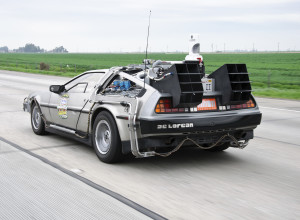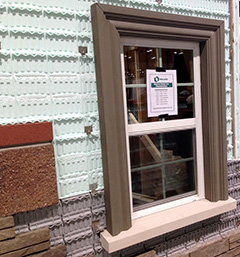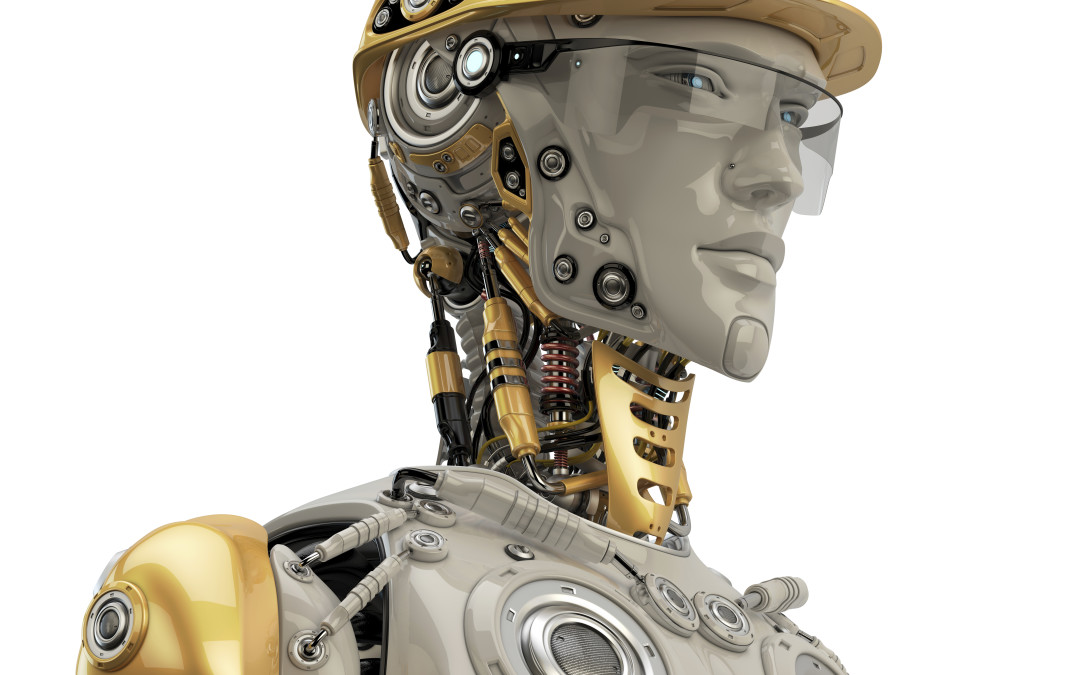Last week, a milestone in pop culture history came to fruition. October 21, 2015 was officially the day Marty McFly boarded a flying Delorean and visited the future.
 While we don’t have flying cars or hover boards (actually, we do) sitting in the garage, the staggering advancements in robotics and automation have brought more science, and less fiction, to everyday life. So much in fact, that a very real debate is brewing — how many jobs will we see taken out of human hands and given to a machine? According to some estimates, more than 30% of the labor force will be replaced by robotics or automated machinery by 2025. Admittedly, low skill and low pay positions will lead the list. And as the prospect for driverless cars evolves from research and development to reality, how will robots in distribution and delivery forever change the supply chain logistics for building materials?
While we don’t have flying cars or hover boards (actually, we do) sitting in the garage, the staggering advancements in robotics and automation have brought more science, and less fiction, to everyday life. So much in fact, that a very real debate is brewing — how many jobs will we see taken out of human hands and given to a machine? According to some estimates, more than 30% of the labor force will be replaced by robotics or automated machinery by 2025. Admittedly, low skill and low pay positions will lead the list. And as the prospect for driverless cars evolves from research and development to reality, how will robots in distribution and delivery forever change the supply chain logistics for building materials?
In a recent report from NPR, researchers compiled a “definitive guide” to machine automation and predicted some interesting statistics which directly related to the building materials industry. Roofers, for example, have an 89.7% chance of being replaced by a machine. Brickmasons? An 82.4% chance. And carpenters? 72.4 % chance of seeing a machine do their job. The report took into account nine traits — four of which we considered most applicable to the building materials and construction professions:
1) Do you need to come up with clever solutions?
2) Will you be required to personally help others?
3) Do work tasks cause you to squeeze into tight places?
4) Does your job success call upon negotiation skills?
It’s hard to imagine a day when we might see machines performing the duties of a tradesman, but the reality is — we’ve already started preparing for it. With the 2009 economic collapse, the skilled labor pool for construction shed more than 2 million jobs… a bulk comprised of immigrant workers who have returned to Latin America and other destinations. With this gap, manufacturers began product developments that simplified once by-hand installations. Composite stone veneers, pre-assembled roof trusses and simplified sheathing systems have continued to enter the market during the up-turn in construction that now allow less-skilled labor to complete the work with better efficiency.
 Considering that construction product systems are being streamlined, does it really seem all that far-fetched for us to envision a machine that can complete the installation? We once relied on hammers to drive nails. Now? Pneumatic guns drive 10x’s the amount. And it wasn’t that long ago that wood stock was hand-carved – – today it’s done with CNC milling operations. Now all of this isn’t to say laborers will be replaced completely on the jobsite. Yet, the idea of exo-skeletal work suits — where workers are inside a robotic suit or assisted by remote control is nearing reality. Through pneumatic attachments and lightweight metal alloys, engineers are designing suits that can exponentially increase a worker’s strength and capacity for production.
Considering that construction product systems are being streamlined, does it really seem all that far-fetched for us to envision a machine that can complete the installation? We once relied on hammers to drive nails. Now? Pneumatic guns drive 10x’s the amount. And it wasn’t that long ago that wood stock was hand-carved – – today it’s done with CNC milling operations. Now all of this isn’t to say laborers will be replaced completely on the jobsite. Yet, the idea of exo-skeletal work suits — where workers are inside a robotic suit or assisted by remote control is nearing reality. Through pneumatic attachments and lightweight metal alloys, engineers are designing suits that can exponentially increase a worker’s strength and capacity for production.
Where Marketing Should Focus
Smart building material manufacturers will be rewarded by adapting to evolving market conditions. So, if machines can increase production, minimize risk as well as solve labor shortages, automation seems less far-fetched. The future exploration of sponsored scholarships in robotics, engineering and production to help groom a generation of designers and operators should merit our industry’s serious consideration. Education will be a critical role in the next generation of designing building materials and systems – and marketing will celebrate those brands who reach new milestones in this pursuit. Certainly craftsmanship will always have a place in construction; and as such, companies with this differentiation in their DNA well may find an advantageous selling point in the future. “A true handmade item… free of machines.” Sound crazy? So did the idea of having a computer in your pocket not 20 years ago.
The times, they are changing. Is your company ready?




